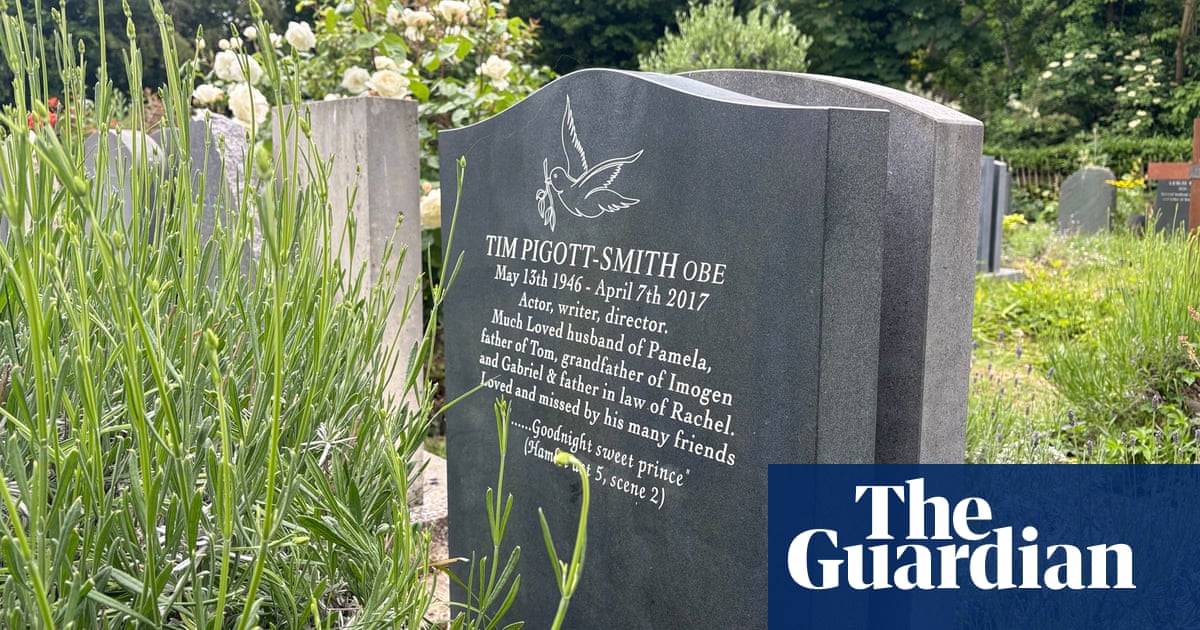Families who have relatives buried in Highgate cemetery have threatened to exhume the remains of their loved ones over plans to build a toilet block on the burial ground as part of an £18m redevelopment of the UK’s most visited graveyard.
Among those opposed to the plans are the family of the actorTim Pigott-Smith, who described the project, which also includes the building of a new gardener’s hut, as “horrific”.
Other bereaved family members, including the widow of thesociologist Stuart Hall, have expressed outrage at what they say is an insensitive scheme.
Tom Pigott-Smith, a violinist, said the toilet block would be just 2 metres from his father’s grave and would ruin the tranquility of an area of the cemetery known as the mound. “We have applied for a licence to exhume, as have other families,” he said. The owner of another grave, who did not wish to be named, said she was also prepared to pay the £3,000 cost to exhume her husband, and would demand reimbursement from the cemetery.
Anna Seifert-Speck is also considering exhuming the remains of her husband, Simon Speck, a sociologist who died in 2019. “I am thinking of exhuming him. I’m planning to be buried there myself and I’m not prepared to be put behind a wall. It is over my dead body, in both senses of the term.”
Pigott-Smith’s widow, the actor Pamela Miles, said the building would be a “horrific” intrusion to a “wonderfully tranquil place”. She said that beforePigott-Smith died in 2017,they had loved going to the cemetery after doing charity readings on the site. “I bought a double grave on the mound when my husband died, intending when I died to join him there,” Miles said in a planning objection to Camden council.
She added: “Grief is a very powerful emotion and needs peace and quiet in beautiful surroundings. This building is a disgrace and an insult to caring loved ones.”
She also accused the cemetery’s owners of being “grossly underhand” in failing to consult grave owners about the plans.
Catherine Hall, an emerita professor of history at University CollegeLondon, said she was not considering exhuming her husband’s remains but was “very distressed” by the planned building. “It’s awful and it’s so close to Stuart. It must be altered. I don’t see how Camden can pass it with such strong opposition.”
She added: “The building would impinge in deeply troubling ways on the vistas, the peace and the tranquillity that are so important to our capacity to visit Stuart’s grave and mourn his passing.”
Others objecting to the building say it would spoil the views looking south from Karl Marx’s tomb. Sara Wood, the widow of the architectNicholas Wood, who died in 2021, described the building as an “urbanised box” with “prison-like windows”.
In her objection to the plans, she wrote: “The path from the Karl Marx tomb will have an intrusive garage-like shed poking up, and his actual burial place will lose its quiet, isolated, historic charm.”
The owners of the site, the Friends of Highgate Cemetery (FHC), have promised to look again at the details of the proposed building but they claim that no alternative site is available.
Hall said: “They say they’ve looked at everything, but have they? I’m disturbed and upset by the insensitivity of the trustees to the feelings and expectations to those of us who are grave holders.”
Ian Dungavell, the chief executive of FHC, said: “We have apologised for the upset that the proposals have caused.” He said revised plans for the gardener’s building, including changing the entrance to a lower level and preventing public access to the toilet, would be discussed with grave owners at a meeting on 3 June.
But he defended the location of the building: “We wish could put it somewhere else, but despite extensive looking we haven’t been able to come up with another location.”
He added: “There are other buildings in the cemetery that are very close to graves. These are facilities for the gardening team who look after the entire 36-acre site.”
Dungavell conceded that grave owners should have been consulted earlier in the planning process, and blamed the delay on the cemetery’s database. But he said those who objected still had an opportunity to influence the plans.
